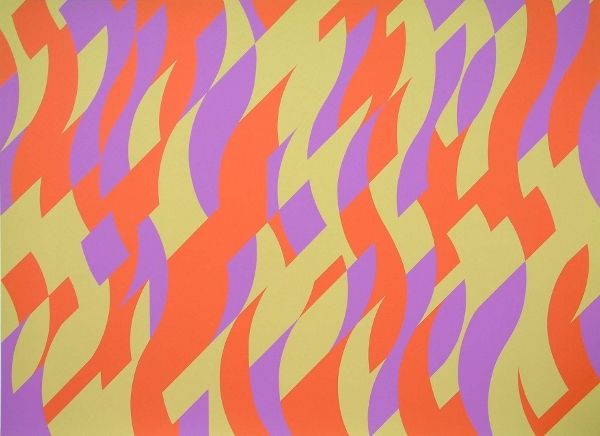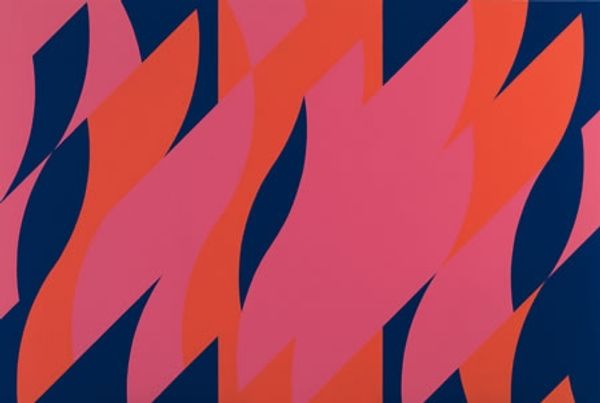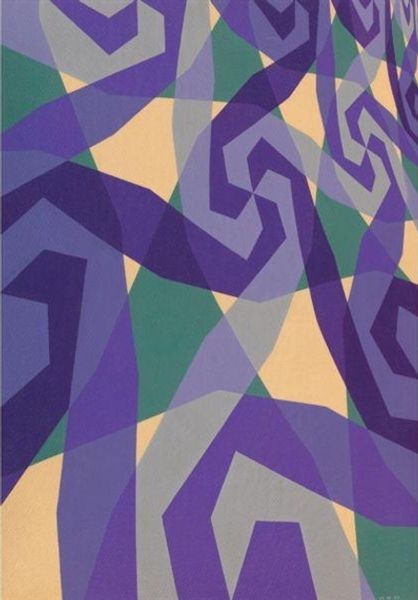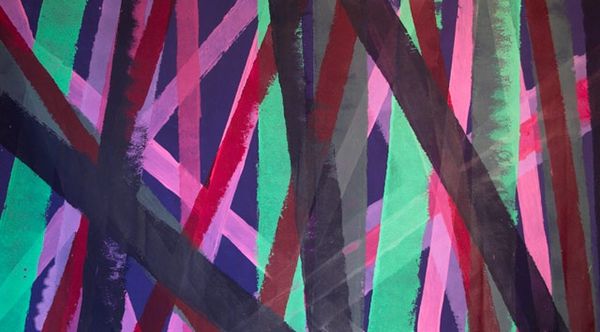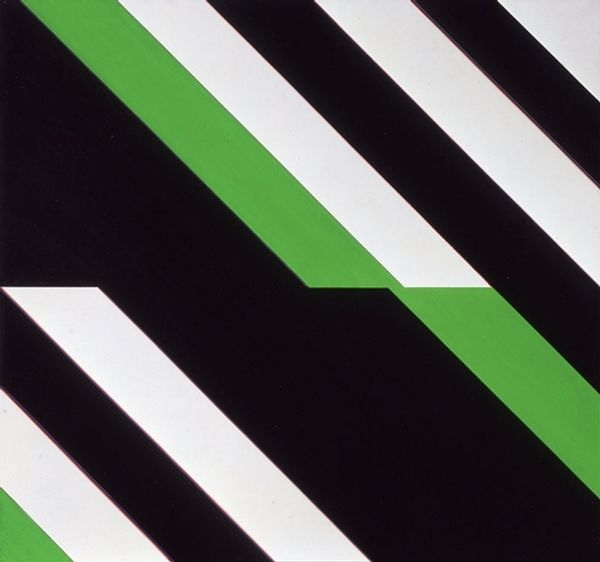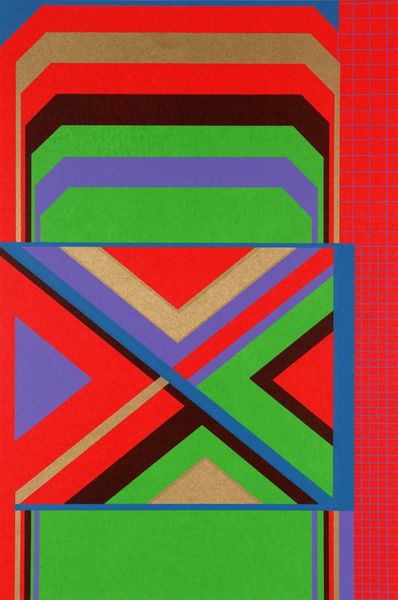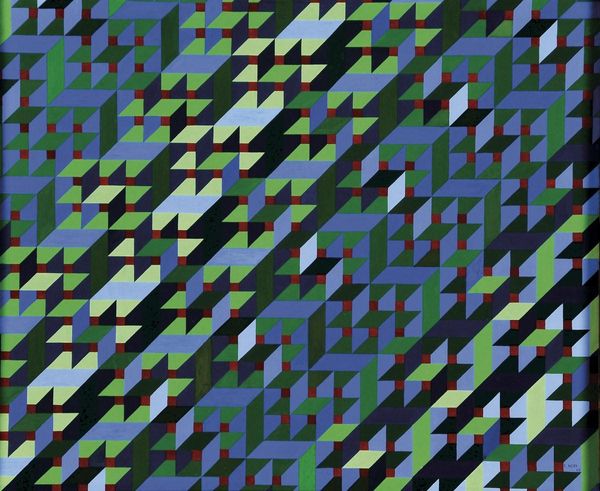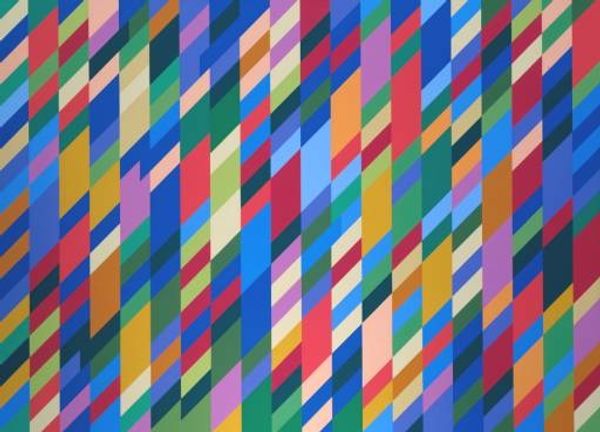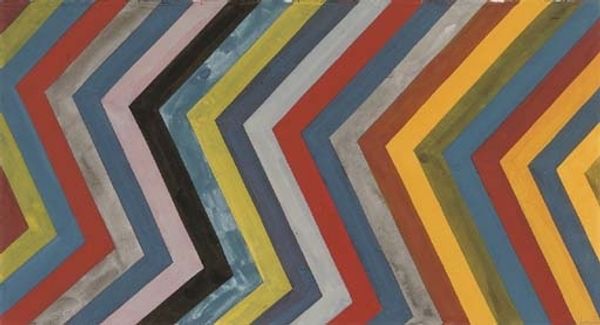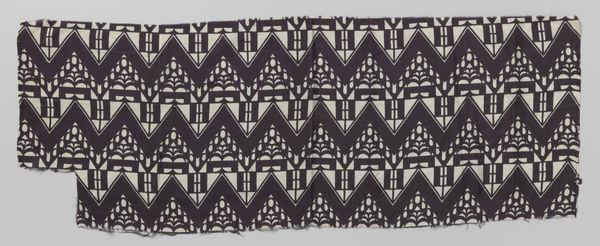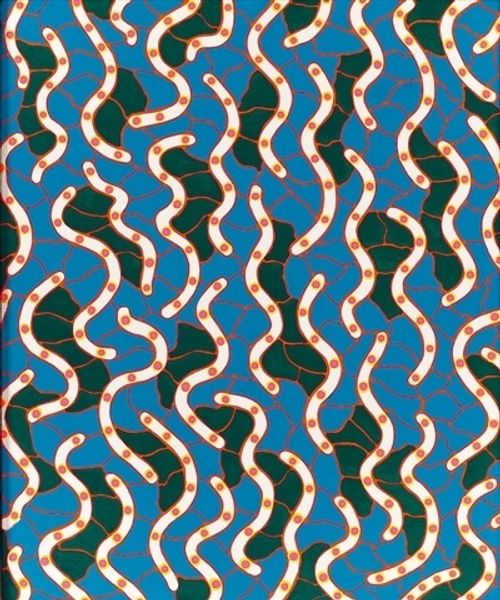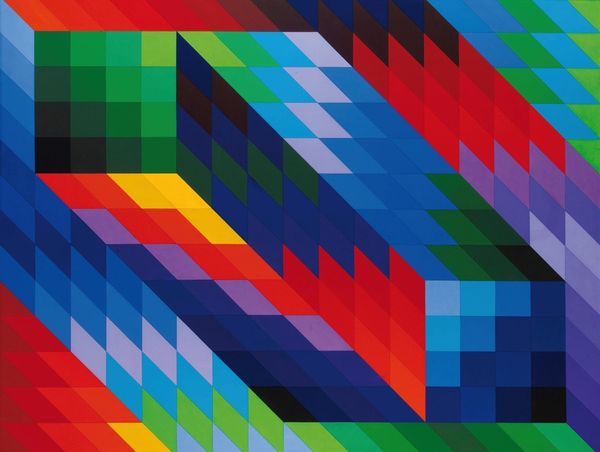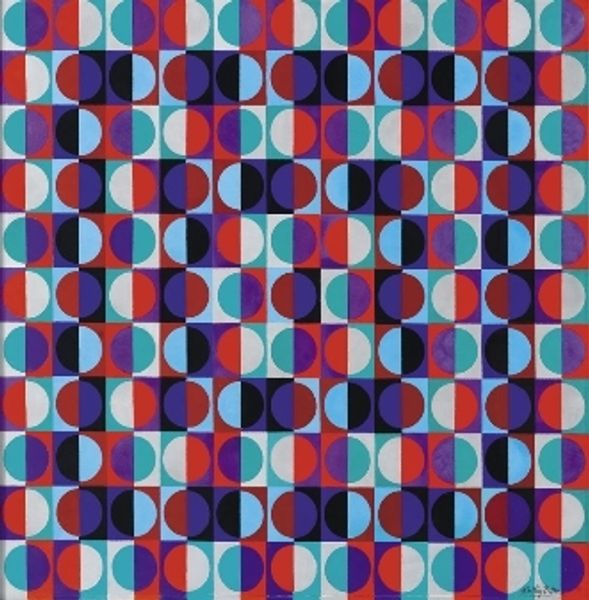
mixed-media
mixed-media
op-art
geometric pattern
abstract pattern
organic pattern
geometric
geometric-abstraction
repetition of pattern
abstraction
hard-edge-painting
Copyright: Hans Hinterreiter,Fair Use
Curator: This mixed media artwork, titled "OP 66," was crafted in 1959 by Hans Hinterreiter. It’s an intriguing example of geometric abstraction. What’s your initial reaction to this work? Editor: My first thought? Electric! There's something almost violently energetic about this repeated pattern. The way those jagged shapes lock together creates a restless sense of movement. It makes me feel a little uneasy, which I suppose is the point. Curator: Well, uneasiness wasn't necessarily the intent. Hinterreiter was deeply interested in the mathematical relationships behind visual harmony. We need to consider that this was created at the height of the Op Art movement and in terms of the cultural impact of science and technology. The geometric abstraction reflects his fascination with mathematical structure and optical effects, seeking order in visual experience. Editor: I agree with what you've just pointed out. But don't you think that his so-called pure, ordered patterns are reflections of their cultural moment? These repeated motifs might be also interpreted as a reflection of the pervasive feelings of mechanization of human life, social conformity and alienation of the individual. It's difficult to detach any work from the reality within which it was produced. Curator: It's an interesting perspective to consider the psychological effect of his work. Still, I would say that, in Hinterreiter's eyes, art serves as an exploration of harmony, order, and structure within abstract forms. I wouldn’t underestimate his background. He saw himself more as a scientific researcher than an artist, examining color systems. His art had a very practical side for mathematical and scientific illustration, therefore his motivation went further than just pure personal expression or social statement. Editor: Okay, but can’t it be both? Consider how artistic expressions might reflect societal changes in different ways? Whether or not Hinterreiter directly aimed to comment on social conformity is not as essential. Instead, our interest focuses on the artwork and our interpretations can provide deeper context and understanding, right? Curator: It’s undeniable, actually. Looking at Hinterreiter's "OP 66" in relation to artistic autonomy and cultural trends is definitely revealing. Editor: Exactly! Whether it’s intentional or not, these pieces offer us a chance to see the hidden facets of an era through abstraction. Curator: Agreed. Ultimately, "OP 66" shows us how one person's quest for abstract perfection can provoke such diverse and engaging perspectives. Editor: Absolutely. It’s like a conversation starter across different lenses—a very enlightening one indeed.
Comments
No comments
Be the first to comment and join the conversation on the ultimate creative platform.
